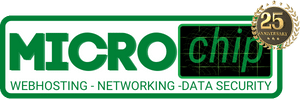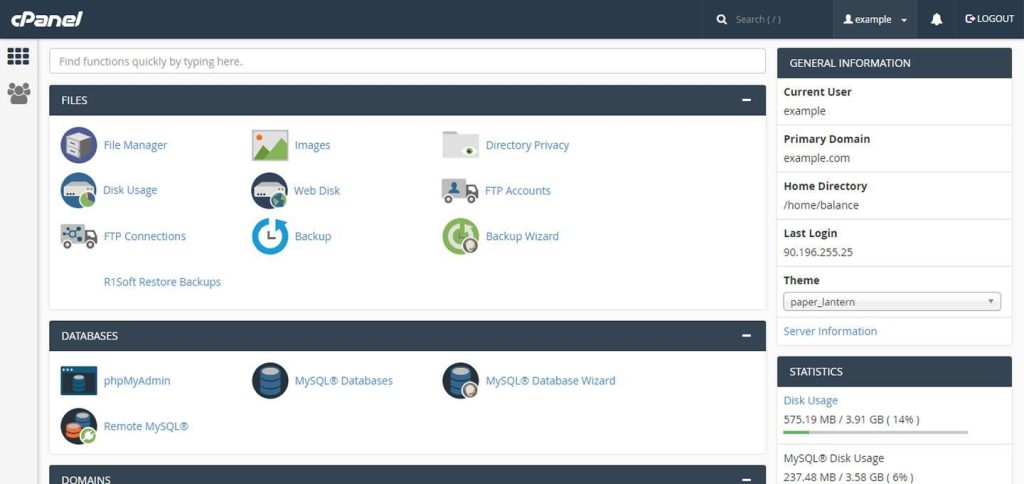What Is a Domain Name, and How Does It Work?
Almost everyone that utilizes the net has come across a domain. However what exactly is a domain name, and exactly how do they function? Should you have your very own domain?

No matter which Advancement Profession Course you’re complying with, it is essential to recognize the fundamentals of domain. In this article (and in the video clip below), we’ll answer every one of your domain name name-related inquiries. Use the table of contents to leap to a particular section.
What is a domain?
What remains in a domain name?
The DNS: phone book of the internet
How your web browser uses the DNS
Caching as well as various other faster ways
What’s the difference in between a domain name and also an URL?
Domain names versus webhosting
Should you have your very own domain name?
Domain name registrars and computer registries
Domain safety
Starting with your site
What is a domain?
A domain name is a distinct string of message that’s utilized to identify a particular resource on the net. This could be anything from an internet site to an e-mail or FTP server.
When you access an internet site, its domain is converted to a collection of numbers (an IP address) to communicate with the website web server to send ask for and also obtain internet site content.
Domain names are developed for individuals
Whatever could theoretically be dealt with making use of just IP addresses when you intend to raise a websites in your web browser. In fact, adding a domain includes an additional action in that there needs to be a means to convert from a domain name to an IP address (a lot more on that below).
So, why do we make use of domain in all?
Imagine that, instead of keeping in mind everyone’s name, you had to remember their contact number or social security number whenever you wished to discuss them. Or think of going into an electronics store and also finding there are no more brand names, tool names, or design names. Whatever simply has a serial number that you have to remember if you want to buy it.
We, people, are far better at remembering names than we are at remembering strings of numbers. That’s why we talk about memorable brand as well as design names, which’s why we make use of domain names rather than IP addresses.
What a domain isn’t.
While you can utilize a domain name for a site or email account, it’s not the same as an internet site or email itself. To put it simply, all web sites as well as e-mail accounts need a domain, but having a domain does not immediately mean that you have a site or e-mail account.
What’s in a domain name?
A domain name can be divided right into two (or occasionally three) components, each divided by durations.
High-level domain names.
The high-level domain name (TLD) is both- or three-letter section to the right of the dot. In the domain “microchip.ch,” “. com” is the TLD. Other typical TLDs include:
. edu (for universities)
. org (generally for charitable organizations)
. gov (for government organizations)
. web
. io.
The TLDs above are called generic TLDs due to the fact that they can be made use of by anyone worldwide. But there are also country-specific TLDs, such as:
. ca (Canada)
. mx (Mexico)
. de (Germany)
. cn (China)
. jp (Japan).
While individuals are essentially totally free to pick various other parts of their domain name (if they’re not currently being used), TLDs have a tendency to be extra restrictive. For example, you should be a recognized post-secondary institution to sign up a domain name with the.edu TLD in the US. And, many nations limit their TLDs to their very own residents or to services signed up within their boundaries.
Second-level domain name.
The second-level domain name (2LD) is what’s to the left of the TLD. In the example of “microchip.ch,” “microchip” is the 2LD.
Third-level domain name.
Sometimes, a domain name has three parts. That is, 3 names separated by 2 dots. Think about British business websites, which constantly finish in.co.uk. So, for Google’s UK website, “Google.co.uk,” “. uk” is the TLD, “. co” is the 2LD, as well as “Google” is the third-level domain (3LD).
A 3LD can likewise be made use of to designate a subdomain. For example, if you utilize Wikipedia in English, after that you go to “en.Wikipedia.org.” Right here, “. org” is the TLD, “Wikipedia” is the 2LD, and also “en” (for English) is the 3LD. Subdomains are commonly utilized to distinguish between various services. For example, take Google’s subdomains like docs.google.com or drive.google.com.
The DNS: phonebook of the web.
Since you understand why we use domain and also the composition of a domain, you could be wondering just how to convert a domain to an IP address. That’s where the Domain System (DNS) is available in.
The DNS is a worldwide data source of all the registered domain names on the net. A DNS document will normally consist of the domain and a connected IP address. With the DNS, your internet browser can equate a domain name in the address bar into an IP address that it can after that utilize to send out demands to the internet server and also obtain page content.
What’s important to keep in mind is that there’s no solitary DNS server and even a single physical location for DNS servers. Rather, the DNS consists of a group of various web servers situated all over the world.
Exactly how your browser uses the DNS.
To access an on the internet source and its content, your browser requires to communicate with multiple DNS web servers. Allows’ take a look at the process.
Recursive resolvers: the DNS librarian.
Let’s go back to the day when you visited microchip.ch for the very first time. When you entered the domain into your address bar, your web browser had no concept where to visit access our homepage, not to mention the web page of this post. To fix this, the primary step is to interact with a recursive resolver.
Think about a recursive resolver as a curator whose job is to interact straight with the various other DNS web servers as well as come back to you with the query results. Recursive resolver web servers connect with three other types of DNS servers: root nameservers, TLD nameservers, and also reliable nameservers.
Origin DNS nameservers.
The highest degree of a DNS question involves the origin nameservers. Root nameservers include info regarding where to find even more details regarding the domain based on its TLD.
In our example of accessing microchip.ch, a root nameserver would certainly direct the recursive resolver to the IP address of one more DNS server with even more info about sites that end in.com. In other words, the root web server won’t know the IP address of a domain name, but it’ll recognize where to go next to find more details.
There are 13 root web servers located around the globe, and also they all consist of information on where to find a domain’s IP address based upon the domain TLD.
TLD nameservers.
The next action is for the recursive resolver to interact with the TLD nameserver that was defined by the root nameserver. In our instance of accessing microchip.ch, the recursive resolver would certainly communicate with a web server that contains information concerning all sites that end in.com. The TLD nameserver will offer the recursive resolver with an IP address leading to the last part of the question, the reliable nameserver.
Authoritative DNS nameservers.
The final step is for the recursive resolver to connect with the authoritative DNS nameserver, which includes details particular to the particular domain name and also is the final owner of the domain name’s IP address.
Once the recursive resolver has the IP address information it requires from the reliable nameserver, it passes the outcomes of the query back to your web browser. Using the microchip domain name IP address, your web browser then connects directly with the microchip.ch server to fill the microchip homepage and also this really short article.
Caching and various other faster ways.
Since you comprehend just how your web browser gets an IP address out of a domain name, you may be asking yourself for how long this process takes. With so many back-and-forth questions through the recursive resolver, it can take a couple of secs– sometimes much more– to fill a page each time you want to access it. Isn’t there a faster way?
When you gain access to microchip.ch or any other web site for the very first time, the inquiry outcome is kept locally in your computer’s cache memory. This way, the next time you visit the site on your computer system, your browser currently knows the IP address associated with its domain. This indicates it can link straight with the web server rather than needing to start another query with the recursive resolver.
Even if you’re accessing a website for the first time, there’s an opportunity that the recursive resolver currently made a comparable question just recently. Possibly a person in your neighborhood is additionally advancing their growth job with our programs.
Because case, the recursive resolver will certainly have stored the query results and IP address in its own cache. Rather than going through an entire brand-new DNS query with you, it can after that simply give the IP address it received from its last query.
What’s the difference in between a domain name and an URL?
As you read this post, you could be seeking out at the address bar and asking yourself whether that’s all part of microchip’s domain name. What you’re in fact considering is the uniform source locator or URL.
The URL consists of the domain (” microchip.ch”) and 2 other important items of information: the transfer procedure as well as the course. Note that some browsers, like Google Chrome, no more show the full link in the address bar. If you’re making use of Chrome as well as can not see the full URL, right-click the address bar as well as click “Always Show Full URLs.”.
The transfer protocol (the “https://” to the left of the domain) is the convention utilized between the computer system and the web server on the internet (in the case of a lot of internet traffic, the very common HTTPS method).
The path name includes info about a specific page or data within an internet site. As an example, every little thing you see in your address bar to the right of “microchip.ch/” is the URL path.
Just like a file course on your computer, the link course for this article is distinct as well as permits you to conveniently access this web page later on or share it with your close friends on social media.
Domain names versus host.
If you intend to start your very own website, you’ll require to do 2 big things: register your domain as well as locate a location to host your internet site.
A host provides a location for you to safely save your internet content: your web page, images, articles, and any other data that people see on your web site. Whenever someone brows through your web site, they’re accessing the details on the servers of your host. Like everything else linked to the web, your webhosting’s web servers are designated their own IP addresses.
It’s practically feasible for you to hold your very own web site on your own personal computer or workplace server, but that’s becoming less and much less usual.
When you register your domain name, you’re adding your domain name to the DNS to ensure that people know it exists. Whether you make use of a webhosting company or host your very own web site, you’ll need to register your domain name. Or else, there’ll be no way for the public to access your web site other than by utilizing an IP address.
Think about it like starting a physical company. First, you need to register your service– request a service name, make sure that nobody else is utilizing your organization name, as well as obtain a Tax ID number. However, you still need a location to do service, whether you’re designating some room in your house or renting out a workplace.
A webhosting service carries out the very same function. Even if you make a decision to alter webhosting suppliers, you still keep your domain name. The only point that alters is the physical web server where your website data are kept.
Should you have your very own domain?
There are several advantages to having your own domain. Not only are they economical (which we’ll get involved in later), but they additionally provide advantages such as:.
A domain provides you your very own corner of the net.
There are many reasons why you might desire your very own domain name. Perhaps you desire a location to include your return to or portfolio. Possibly you’re looking to showcase a facility web site you developed yourself with languages like HTML, CSS, and JavaScript.
No matter what you plan to use it for, having your very own domain allows you to develop a web existence that’s entirely about you. There are no social networks templates, word matter limitations, or distracting sidebars completing for readers’ interest.
A domain name elevates you properly.
As you begin networking and also advancing your profession, having your very own website with your very own domain name claims a lot concerning you properly. It suggests that you’re taking your job seriously, not to mention that you have the abilities to assemble your very own internet site.
While you can always provide your GitHub, LinkedIn, and also other social media profiles on a calling card, consider just how it’ll be obtained. Virtually everyone has a social media sites account, but having your very own domain name talks to your professionalism and reliability. Plus, with your own site and also domain, there’s a single location for you to inform your expert story and also present your portfolio the way you want to.
Domain registrars and computer system registries.
We’ve reviewed what domain are, exactly how they function, as well as why you should have one, yet just how do you actually get your own domain? If you think of a memorable name for your individual site or company, exactly how do you get it videotaped in the DNS to ensure that individuals can begin utilizing your domain name to access your web site?
The reality is that having your very own domain name is easier than in the past. Enrollment costs are only $10–$ 15 a year, and also the enrollment process is quick and basic. And also as soon as you have your own domain name, you have immediate access to all the advantages that feature it.
To comprehend that better, let’s first review domain name registrars and windows registries.
Domain name windows registries.
Computer system registries are the companies that manage the TLDs. For example, there are different registries for.com and.org domains, as well as different computer registries for each and every country-specific domain. Windows registries maintain records of which domains belong to which people or companies at any provided time.
The role of a registry is totally restricted to record-keeping. When someone intends to acquire a domain, they must deal with a registrar.
Domain registrars.
For industrial sales of authorized domain names, computer registries delegate organizations called registrars to manage sales as well as customer communications. When you buy a domain, the registrar informs the registry to update its documents and also connect you or your business keeping that particular domain name. Windows registries charge a cost to registrars for each domain enrollment, yet that expense is passed to you via the registrar. So, every one of your financial purchases are with the registrar, as well as it’s the registrar that is accountable for customer service and also assistance if there’s an issue later on.
Domain resellers.
If you’re seeking to register a domain name, you might find a reseller as opposed to a registrar. Resellers work with part of registrars as well as generate income by getting a section of the registration charge.
While many resellers are legit, you must bear in mind that resellers seldom supply the same level of consumer assistance as registrars.
There’s also domain squatting (AKA cybersquatting). In other words, some individuals will get domain associated with various services, companies, as well as also stars in hopes of reselling them later for a revenue.
Can you own a domain name?
While you hear a great deal about people purchasing, offering, and also possessing a domain, the fact is that the registry possesses every one of its registered domain.
When you “acquire” a domain name, you’re actually leasing it or purchasing the right to reserve a domain name for your usage for a certain quantity of time– normally not more than 10 years. Still, it’s constantly feasible to keep renewing a domain, which indicates that people and also firms can efficiently control it forever.
Domain protection.
Once you’ve acquired your own domain name, always follow great domain name safety techniques, such as:.
Keep your domain locked.
Whenever your domain name is secured, it stops anybody, including you, from making any type of adjustments to the details associated with it. If you do wish to make any changes– for instance, alter the IP address that the domain points to after switching over host providers– then you need to open your domain name.
The issue is that an opened domain can potentially be transferred to an additional registrar or third party as well as picked up by another person. That’s why it is essential to unlock your domain name only when you absolutely need to.
Make use of a trustworthy domain registrar.
Utilizing a third-party domain reseller to save some money can be appealing, yet it’s not worth the threat. Lots of third-party resellers have infamously bad customer service, and if they go out of business, your domain name could be in danger of being transferred to somebody else.
Register domain name variations.
Even if your domain name is catchy and also easy to remember, typos happen. The last thing you desire is for a hiring manager or prospective client to obtain an error message because they missed a letter when inputting in your internet address.
That’s why you ought to take into consideration signing up domain name variations that redirect individuals to your website, even if they’ve mistyped something. For instance, a lot of people misread or mishear microchip as “microchip” Yet, when they type in microchip.ch, they’re instantly rerouted to the correct domain name, microchip.ch.
In a similar way, claim your domain finishes in “. org,” “. edu,” or “. net.” You could want to think about signing up the “. com” version also to avoid rivals from doing the exact same.



